Colin Lacey writes about the historic underwater cable that linked Kerry’s Valentia Island to Heart’s Content, Newfoundland, and why the island deserves to be added to UNESCO’s list of World Heritage Sites.
The connections between Ireland and Newfoundland run deep. The Irish began visiting there as far back as the 17th century, first as seasonal fishermen, and later migrating with their families. But the links go even further back.
One hundred and eighty million years ago, parts of Ireland and Newfoundland were connected as part of the supercontinent Pangea; the land started to break apart as the modern Atlantic Ocean was formed, and even today, scientists have discovered minerals, rocks and fossells that tell that story.
What’s more, it was a literal link between Ireland and Newfoundland that made quick communication between Europe and North America possible, an event that was heralded as the dawn of the modern age of communication.
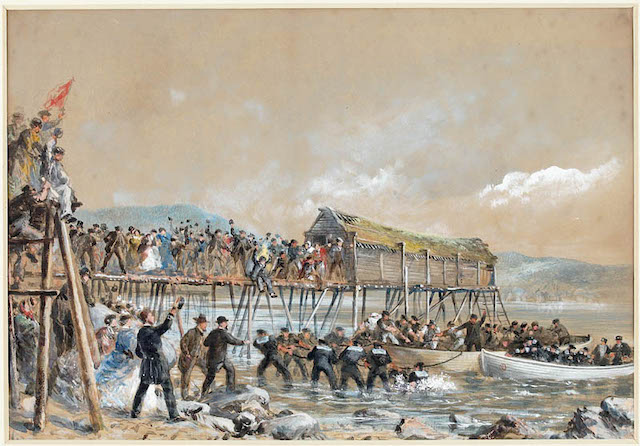
It happened in July 1866, when, after years of failed attempts costing tens of millions of dollars, tiny Valentia Island, off the south-west coast of Ireland, and the remote outpost of Heart’s Content in Newfoundland were successfully linked by 2,000 miles of underwater telegraph cable. Instant communication between North America and Europe was no longer an aspiration; finally, the continents were permanently connected.
Tens of thousands of miles of cable already criss-crossed the North American continent by the 1860s, and as many more connected the capitals and most remote areas of Europe and beyond. But direct communication between Europe and North America was only as fast – or slow – as a letter could be carried across the sea by boat. Details of Abraham Lincoln’s assassination on April 14th 1865 spread across telegraph cables throughout the U.S. within minutes; the U.K. and Europe remained unaware of the President’s death until April 26th, when a steam ship from New York docked in England with the news.
But in July 1866, the Great Eastern, then the largest ship in the world and capable of holding up to 6,000 passengers or 10,000 troops, sailed westwards from Valentia in Co Kerry, slowly paying out thousands of miles of specially-designed telegraph cable along the Atlantic seabed.
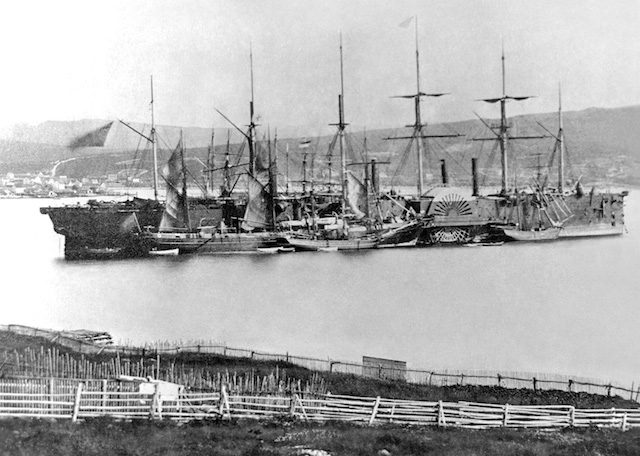
Two weeks later, the massive ship reached Heart’s Content, and the cable was brought ashore. By July 28, the link between the two continents was completed. Europe and North America were plugged in and permanently online. The Great Eastern went on to retrieve the cable, which had broken and disappeared beneath the Atlantic during an attempt to link Valentia and Heart’s Content a year earlier.
Two transatlantic cables now connected Europe and North America and the sine qua non of today’s political, business, cultural and personal communications – instant global interconnection – was finally possible.
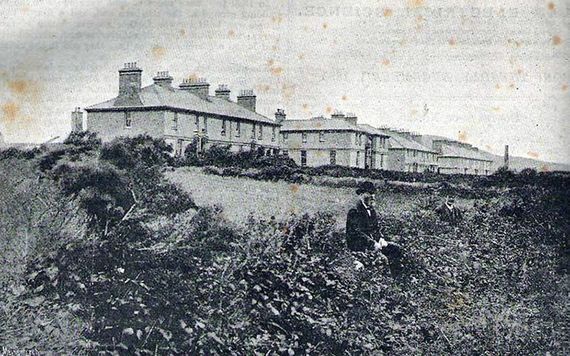
The successful completion of the cable made headlines around the world. In New York, a massive banquet was held to honor Cyrus Field, the Massachusetts-born millionaire businessman whose vision drove the transatlantic cable project, while a commemorative poster was issued celebrating the Eighth Wonder of The World, showing Neptune guarding the undersea cable held at either end by a British lion and an American eagle. An original is still held at the Library of Congress in Washington.
Over a century years later, the significance of the achievement was still being recognized. In 1973, scientist and writer Arthur C. Clarke described the project as the Victorian equivalent of the Apollo space program – which makes Valentia a sort of Victorian-era Cape Canaveral. In 2016, the 150th anniversary of the successful laying of the cable was celebrated, and a campaign is currently underway to have Valentia Island recognized as a UNESCO World Heritage site, a ranking that would place it alongside world-famous industrial landmarks like the Cornwall and Devon Mining Landscape in the UK, Canada’s Rideau Canal, and The Climats in France’s Burgundy region.
In October, the Irish island will host the latest in an annual series of events that have attracted significant attention from internationally prominent academics, politicians, communications companies, cable enthusiasts, and members of the public since 2016. This year’s Valentia Lecture, which takes place at the Island’s cable station – the historic building that was the European nerve-center for transatlantic telegraph communications for over a hundred years – will reflect on the ongoing campaign to seek UNESCO designation for Valentia, and feature a variety of keynote speakers, including David McCourt, CEO of Granahan McCourt Capital and Ann O’Dea, CEO of Silicon Republic.
U.S. networking giant LinkedIn, which has recently joined the project as a sponsor, will also be represented at the event. Previous lecture series have featured contributions from former U.S. Ambassador to Ireland Kevin O’Malley, and Ireland’s Minister for Finance and Public Expenditure, Paschal O’Donohoe, while the campaign for UNESCO recognition has been supported by major global companies, including Fexco, Intel, BT, and Brown Brothers Harriman along with the Industrial Development Authority and Failte Ireland.
The inaugural lecture in 2016 was attended by Cyrus Field IV, the great-great-grandson of Cyrus Field. Two years later in 2018, President Of Ireland Michael D Higgins made an official visit to Valentia and voiced his support for the Island’s campaign for World Heritage status.
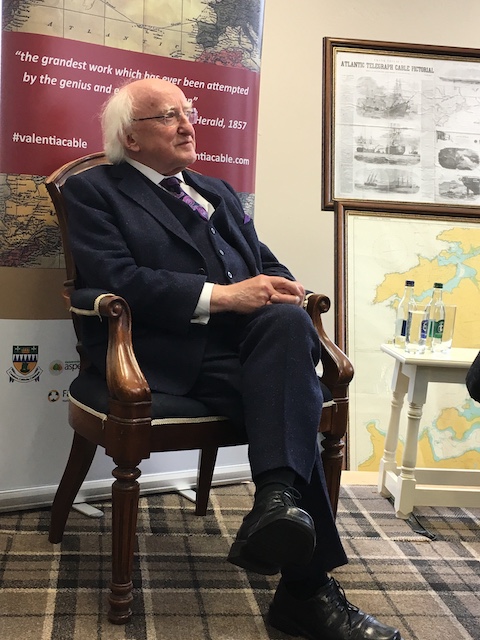
“What happened here in Valentia was such an important contribution to the development of communications,” President Higgins said, adding that he is “very much in favor and support of those who are seeking recognition of the connection between Valentia and Heart’s Content as a UNESCO World Heritage site.”
The 2020 event on October 9, will feature a unique ‘fireside chat’, in a fireside chat during which local school children on Valentia, a tiny island off the southwest coast of Ireland, will join fellow school kids from Heart’s Content in Newfoundland in an online conversation sharing their visions of how individuals, communities and countries will connect and correspond fifty years from now, in 2070. Meanwhile, older members of both communities will swap memories and personal stories, while musicians from both sides of the Atlantic will perform.
With corporate and political support growing, including backing from Kerry County Council, the local authority which oversees Valentia, momentum appears to be building towards the next step on the island’s journey towards UNESCO status – inclusion on what is known as the ‘tentative list’, a schedule of sites identified by the Irish government as suitable for consideration as a UNESCO World Heritage site. The Tentative List is expected to be updated this year – with Valentia a leading candidate for World Heritage consideration.
Valentia’s expected application is likely to be strengthened by the island’s links with Heart’s Content, which is already on the Canadian government’s tentative list, and the current plans are to approach UNESCO with a transnational application for both sites to be simultaneously granted World Heritage status.
According to Leonard Hobbs, chairman of the Valentia Transatlantic Cable Foundation, Valentia’s role in the development of modern communications warrants its recognition as a World Heritage site.
“The significance of the role Valentia played was not only in being the place where the very first messages were transmitted from, but it was also the place where the subsequent innovation drove the kinds of improvements which were required to make the global communications business a commercial success,” he says.
“A number of the original features remain and will be restored to provide future generations the opportunity to learn about the historical significance of this inspiring endeavor.”
Cyrus Field and his so-called ‘Cable Cabinet’ founded the New York, Newfoundland, and London Telegraph Company in 1854. It took twelve years, five attempts and many millions of dollars before the age of global communications finally arrived with the cable of 1866. As the communities of Valentia and Heart’s Content come together in October to talk, reminisce, and share their dreams, they’ll be hoping World Heritage status can be attained a little more quickly.
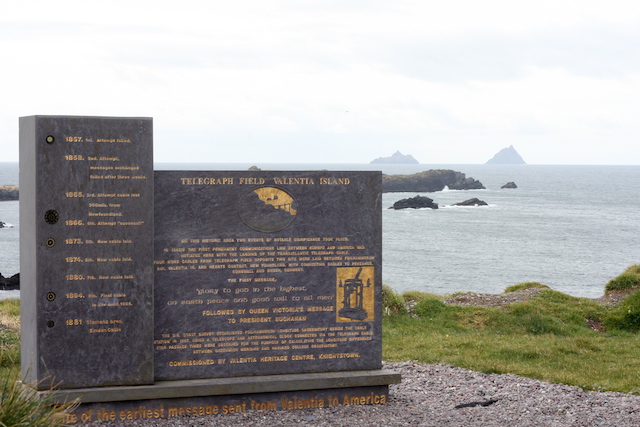


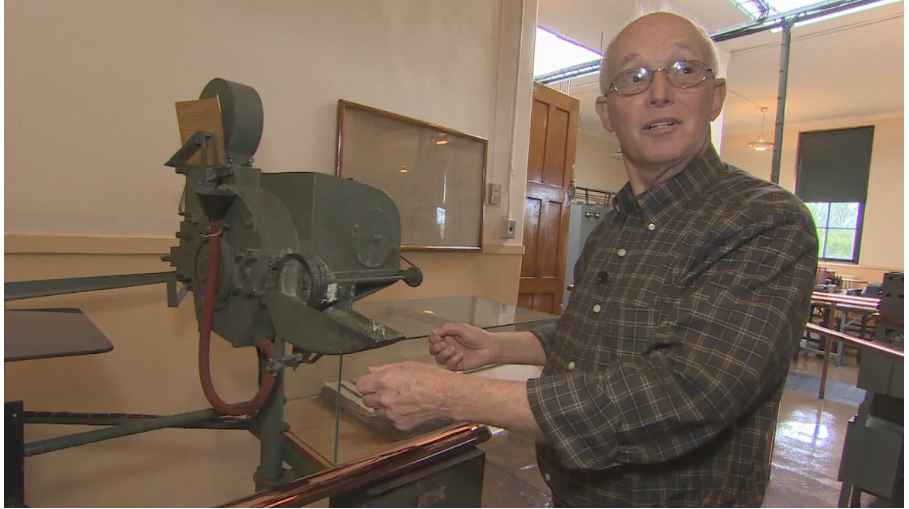
Editor’s Note: In July 2022 it was announced that Valentia Island’s transatlantic cable would be put forth to receive Unesco World Heritage status. World Heritage Sites are designated by UNESCO for having cultural, historical, scientific, or other forms of significance.
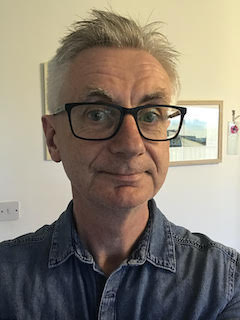
Colin Lacey is a former editor of Kerry’s Eye newspaper in Tralee, Co Kerry. He was a frequent contributor to Irish America and the Irish Voice, as well as other U.S. publications in the 1990s when he lived in New York.

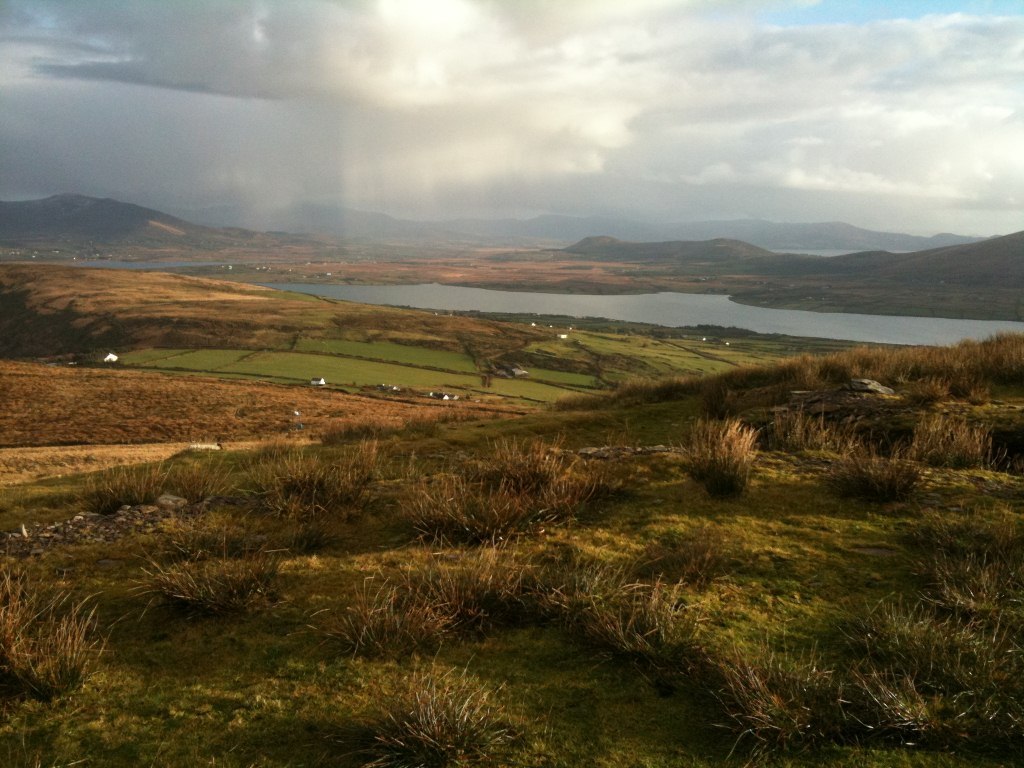
I’m the holder of an FCC First Class Telegraph License and worked for several years as an officer on U.S. vessels visiting many countries and all Continents including Antartica. I’m also a licensed examinator for American Amateur (Ham) Radio with American Call Sign AA2OO (Alfa Alfa 2 Oscar Oscar). I also hold an Irish Amateur Radio License, call sign EI4CT. In light of same, I find the article educational. The Cable connection with Valentia was not great. Communications with Ireland improved dramatically with the completion of Marconi CW stations between Canada and Clifden in Galway. So, why hasn’t Clifden’s old Marconi Morse Code Station also being sent forward for UNESCO Status since it was the first station with communications by air between North America and Ireland (Or Europe)?
I’m the holder of an FCC First Class Telegraph License and worked for several years as an officer on U.S. vessels visiting many countries and all Continents including Antartica. I’m also a licensed examinator for American Amateur (Ham) Radio with American Call Sign AA2OO (Alfa Alfa 2 Oscar Oscar). I also hold an Irish Amateur Radio License, call sign EI4CT. In light of same, I find the article educational. The Cable connection with Valentia was not great. Communications with Ireland improved dramatically with the completion of Marconi CW stations between Canada and Clifden in Galway. Clifden was also the location of the first Atlantic flight from North America to Ireland having landed next to the Marconi wireless station. So, why hasn’t Clifden’s old Marconi Morse Code Station also being sent forward for UNESCO Status since it was the first station with communications by air between North America and Ireland (Or Europe)?
I believe my grandfather was a ships radio officer on one of the cable laying missions.
Was there one in the early 1900’s?
How would I find out more about this?